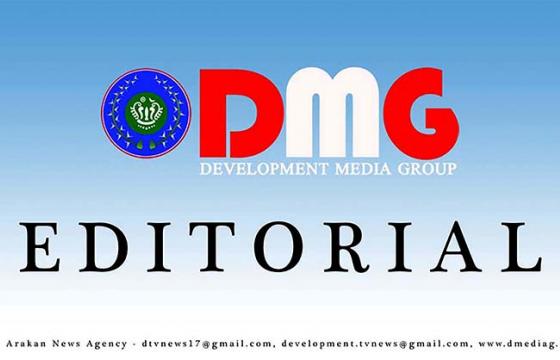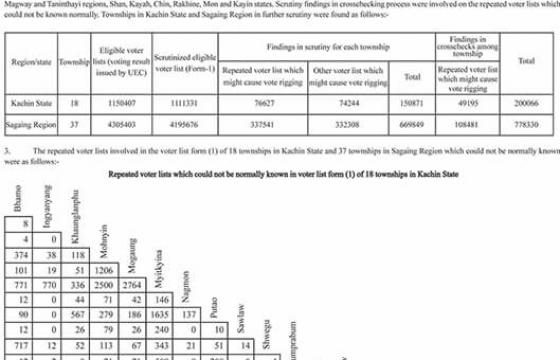When a truck crashed through a Thanbyuzayat traffic circle last month, destroying a golden Sheldrake sculpture, many Mon people saw their feelings of persecution embodied. The Sheldrake is a symbol of Mon culture and its destruction capped off 100 days of ethnic strain that included the opening of the controversial General Aung San Bridge and a by-election in which ethnic politics was central.
***Ethnic nationalism continues to be a prevailing currency in Burmese politics, and local politicians never seem to miss a chance to exploit ethnic tensions for short-term politics goals. From the comfortable middle class of the country’s dominant ethnic group, the Burmans, nationalism takes the creeping form of assimilating minorities. After decades of coercive assimilation from military regimes, the new National League for Democracy (NLD) government often pursues the same goals through non-coercive means, now using the mechanisms of civilian government. The same government that pronounces itself committed to “democratic federalism” continues the project of assimilation.
History of Distrust
The history of Burma/Myanmar is a 3,000-year ethnic seesaw in which successive groups came to dominate the powerful lowlands of the Irrawaddy river plane, casting their predecessors out into the margins. The last of these transformations came in the 16th century, when the Burmans became the dominant group. Groups that had once ruled—like the Mon, Shan and Arakanese—now lived at the edges, out of control but still under pressure. The area has always hosted myriad ethnic groups and inconsistent levels of central control.
The arriving British sought to control the region with as little effort as possible, and their strategy of divide-and-rule inflamed ethnic tensions. While these may have been put aside during the common struggle for independence, the nationalism that drove the movement was coopted afterwards into a chauvinist project of Burmanization that strained the union to near collapse. Nationalism as a tool exhausted its usefulness when the British departed in 1948, but it continued to dominate elite sentiment for the next 70 years.
The current political landscape is a direct extension of that history. From the near-failure of the government after independence came decades of armed conflict that distorted institutions and entrenched ethnic animus. Many of the country’s most influential figures came to power by exploiting ethnic conflict—both Burman generals and armed ethnic leaders became rich extracting resources in conflict areas. Even though the project of assimilation violates international human rights law, ethnic conflict in Burma has endured because these leaders had little reason to stop it.
Empty rhetoric
In December 2011 Time Magazine ran a cover story featuring a close portrait of Daw Aung San Suu Kyi under the title Brave New Burma. The country was in the midst of a whirlwind change, the limits of which no one at the time quite knew. In those anxious days of anticipation, people all over the world hoped that the country was moving towards a new phase, where the diverse nation of 50 million might embrace genuine, multicultural democracy built on peaceful coexistence.
Even in the decades before that shift, the language of “unity” and “national reconciliation,” had been ubiquitous in government publications. But ruling elites have never—to this day—really appreciated what the words mean. Politicians cheaply throw around the terms “unity” and “peace”, but always see those ideals in terms that only benefit their group, ethnic or otherwise. For them, peace is a one-sided deal, akin to peace through force. While they may be able to envision a peace where civilians no longer die in conflict, they cannot see a peace where those civilians learn their own language in school or have control over their destinies. When they describe peace, they really describe victory.
This is what the exploitation of ethnic politics is. It is the use of small feelings of nationalism and bigotry to divide and distract the people of Burma. This politics hides behind vacuous notions of unity to distract from the real issues that a rapidly developing Burma must seriously face.
Emerging Genuine Discourse
After 30 years of reading about political movement in my country, I feel that I must write about this subject before it becomes too late, and a new generation forgets the lessons of the old. I am calling for bold action to address this problem. I am fighting for the legacy of the current generation, so that the story it may tell is one of hope for genuine unity of all nationalities. It is the responsibility of all of us living today to examine these issues and make sure we are prepared to confront the forces of the old with principles of freedom and equal treatment under the law.
I am far from alone in this pursuit. Burmese and other prominent writers and scholars have been searching for a genuine partnership of all Burmese people for as many years as there has been conflict. As an opposition figure, Daw Aung San Suu Kyi was a leading voice of the democratic movement, and tried to eschew playing into ethnic politics. It was her appeal to be a leader for all Burmese, not just Burmans, that kept posters of her image on every street corner and in every house. As her National League for Democracy (NLD) has become the dominant civilian force in the country, though, it has had to compete with other parties, especially the military-affiliated Union Solidarity and Development Party (USDP) that continue to espouse ethnocentric ideologies under the banner of “flourishing and disciplined democracy.” Rather than stick to its multiethnic roots, NLD has at times seemed to embrace the same politics of division.
Debates about the nature and direction of Burmese politics will continue among the country’s diverse political leaders. But it is among scholars and writers that real, probing exploration of the current conflict is explored. Unconstrained by the demands of regular elections, these intellectuals look to more fundamental problems than the conflict between the NLD and the military.
It is not for lack of alternatives that elites still pursue the tired ethnic agenda. According to an essay by Nai Hong Sa, vice president of the New Mon State Party (NMSP) and spokesman for the United Nationalities Federal Council (UNFC), both Burman and Non-Burman pro-unity leaders have been crafting policy initiatives for over twenty years but have been ignored by current and past ruling elites. Nai Hong Sa is the longest serving Mon leader and a prominent activist among 17 large armed ethnic groups.
The goal that Nai Hong Sa and others have for a democratic, federal system of government can only be attained if the new leadership of minority ethnic groups pursues a politics that is bigger than narrow ethnic self-interest. Instead they must focus on national unity and the national interests. For Burman leaders, this will mean vesting power to state and regional governments, rather than the union. For minority ethnic leaders, this will mean forming a broad coalition across ethnic lines that can fight for the rights of all peoples. Unless a sustainable power sharing arrangement is constitutionally enshrined, the dominated ethnic group—now the Burmans but perhaps someday a different group—will exploit the other, less powerful groups.
The Way Forward
Ethnic politics continues to bring short-term gains to Burmese politicians. But as Burma seeks to transition to a market economy, nationally unified politics will become even more important. If Burma hopes to leave behind 60 years of isolation and catch up to the industrializing Southeast Asian countries like Thailand, Malaysia and Singapore, there will be little room to play with ethnic politics. A genuine federal democracy that embraces free markets and economic liberalization cannot afford to waste precious political capital.
Daw Aung San Suu Kyi’s NLD and the leaders of minority ethnic parties face daunting challenges as they steer the reform agenda. They operate within a government still dominated in no small part by cunning military implants in the cabinet and parliament who continue to favor a regime of Burmanization. The military-dominated National Defense and Security Council has enormous power over policy but is comprised of generals who have built their careers not fighting external enemies but ethnic armed groups. Cleary, then, ethnic politics endures.
A deep mistrust has developed over the last two centuries among Burma’s ethnic groups, caused by suffering from wars and ethnic conflicts, and the trauma of the current struggle to live a dignified life. But my homeland, a country of rich resources, can be born again with ‘unity’ as the central tenant of social, cultural, and political pluralism.
‘Brave new Burma’ will be tested over the next ten years as to whether the roads to peace and recovery are within reach. A nation with the political trauma that Burma has cannot progress unless a shared vision is reached among all ethnic groups. It is time that the government act bravely on its agenda to restore the rule of law for all the people of Burma, and become a government of the people and for the people.
***This essay first appeared in 2012. It has been updated to reflect recent developments.






